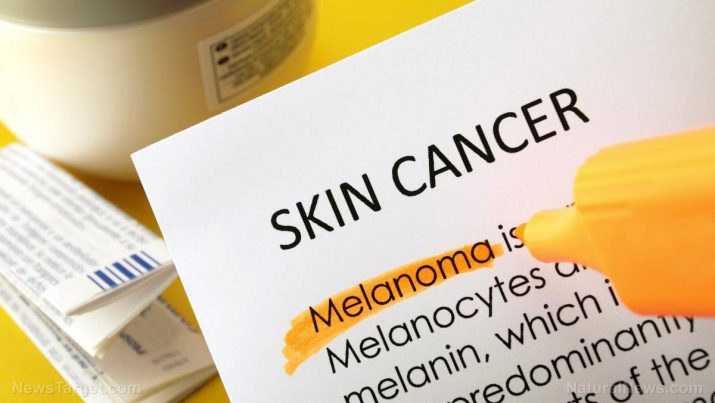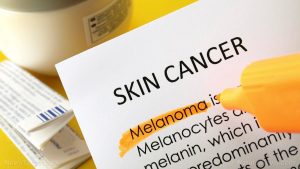
Lentigo maligna melanoma – causes, side effects and treatments at NaturalPedia.com
Thursday, May 03, 2018 by Ralph Flores
http://www.naturalpedia.com/lentigo-maligna-melanoma-causes-side-effects-and-treatments-at-naturalpedia-com.html

Lentigo maligna melanoma (LMM) is a type of skin cancer that occurs in older adults. The average age of LMM diagnosis is 65 years old, and it is believed to be caused by a person’s history of sun exposure in the affected area.
Of the four types of skin cancer (melanoma), LMM is the slowest growing type. It starts out as a dark brown, tan, or black pigmentation on areas of the skin that are exposed to the sun.

Known risk factors and symptoms of lentigo maligna melanoma
While LMM and melanoma, in general, are uncommon forms of skin cancer, there has been an increasing number of people being diagnosed with melanoma, including young adults.
A person increases his risk of getting LMM with age. In addition, having these risk factors increase a person’s chance of developing a melanoma in his lifetime:
- Fair skin, blue or green eyes, or red or blond hair
- Living in sunny climates or at high altitudes
- Have spent a lot of time in high levels of strong sunlight
- Have had one or more blistering sunburns during childhood
- Use tanning devices
Aside from these, a person with close relatives with melanoma, as well as those with birthmarks or moles, are also prone to LMM.
Symptoms of LMM include the following:
- The presence of an irregularly-shaped pigmented area on the skin that is changing.
- A pigmented skin lesion in areas exposed to the sun, which usually are the face and the neck regions. It may also appear on the chest and back for men and the lower legs for women.
- Skin lesions that are greater than 10 millimeters in size and have a non-uniform discoloration. Some lesions are flat but look irregularly-shaped, with light or dark pigmented, skin patches.
- Larger skin lesions may have irregularly formed nodules in the patch and may vary in shade.
- A pigmented area that has spread its color to the surrounding skin, accompanied by swelling, redness or itching.
Body systems affected by lentigo maligna melanoma
In advanced cases of LMM, the condition may metastasize beyond the skin to other organs by using the lymph nodes. This will then affect the lung, liver, brain, bone, and the gastrointestinal tract. Removing the skin lesions is not a sure way to treat LMM as there could be recurrence afterward.
Food items or nutrients that may prevent or relieve lentigo maligna melanoma
The likelihood of developing LMM and other types of skin cancer may be reduced with proper diet. Here are some suggested food items that may boost the body’s protection against the disease.
- Antioxidant-rich foods help prevent cell oxidation and free radical damage, which are the most common causes of cancer. These can be found almost all fruits and vegetables.
- Dark leafy greens, in particular, can improve the body’s resistance to certain types of cancer including melanoma.
- Coffee, according to a study, is linked to reduced levels of skin cancer.
Treatment and management options for lentigo maligna melanoma
Healthcare professionals will recommend various treatments to address LMM. This is done by determining the staging of the condition, as well as the physical characteristics of the tumor.
Where to learn more
- Melanoma breakthrough: Natural fruit and vegetable substance stops skin cancer cells
- Melanoma (skin cancer) found to be easily prevented with low-cost Vitamin B-3
- High melanoma risk found in airline crews exposed to high-altitude radiation
- 9 Ways to Melanoma Risk
- Prevent Melanoma Naturally
Summary
Lentigo maligna melanoma is a type of skin cancer that occurs in older adults. Of the four types of skin cancer (melanoma), LMM is the slowest growing type. It starts out as a dark brown, tan, or black pigmentation on areas of the skin that are exposed to the sun.
While LMM and melanoma, in general, are uncommon forms of skin cancer, there has been an increasing number of people being diagnosed with melanoma, including young adults. Advanced cases of LMM metastasize beyond the skin to other organs by using the lymph nodes.
Sources include:
Tagged Under: Tags: lentigo maligna melanoma





